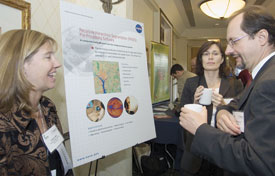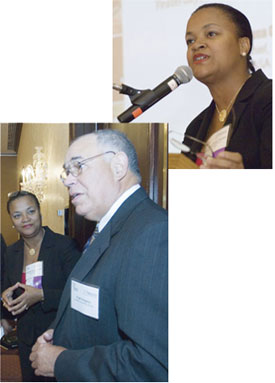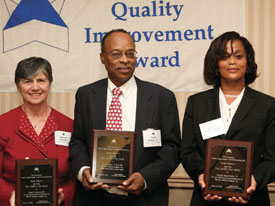|
||||||||||||||||||||||||||||||||||
| volume 5, number 1: WINTER 2007 |
|
|||||||||||||||||||||||||||||||||
|
[Links followed by * open new browser windows.] |
||||||||||||||||||||||||||||||||||
|
As NASA pursues its exploration and science goals, the Agency is working to leverage the resources of other organizations. To that end, the IPP Office is taking an active role in helping Goddard personnel identify and pursue funding opportunities from federal agencies. “In these times of shrinking R&D funding from HQ, Goddard is looking to improve its track record in technology partnering with other government agencies to the benefit of both NASA and the partner agency,” said Tupper Hyde (Code 500), chief technologist for Goddard’s Applied Engineering and Technology Directorate. “The IPP Office provides a valuable service in seeking out these partnering opportunities and then following through with agreements, often bringing new and unique collaborations to Goddard.” Focusing on calls aligned with Goddard’s capabilities, the IPP Office has identified nearly two dozen agencies with relevant solicitations, including the Defense Advanced Research Projects Agency; the Departments of Commerce, Energy, and Veterans Affairs; the Environmental Protection Agency; and the National Science Foundation. “Goddard’s cutting-edge R&D not only contributes to NASA missions but also may benefit other federal programs,” said Nannette Stangle-Castor, who has been leading these efforts for the IPP Office. “Interagency collaborations allow Goddard and its partner to share R&D insights and resources.” Two federal funding opportunities appear below. Researchers interested in learning of federal solicitations related to Goddard’s strategic objectives are encouraged to e-mail the IPP Office.
Other Federal Funding Solicitations Two military agencies have issued notices for funding of research and development (R&D) projects. Researchers are encouraged to consider whether their NASA mission work overlaps with these solicitations. With some modifications, existing project/proposal summaries (e.g., for IRAD or IPP Seed funding) might be submitted as white papers or executive summaries as a first step in pursuing funding from these agencies: Agency: Defense Advanced Research Projects Agency’s (DARPA) Strategic Technology Office Solicitation: Strategic Technologies* (BAA07-01) Relevant areas of interest: Very broad, including sensors and sensing systems; materials; space structures; next generation power systems; optics; electronics; guidance, navigation, and communications; lidar; imaging devices and technologies Closing date: December 31, 2008 (initial submission requires only a one-page executive summary) Agency: Air Force Office of Scientific Research Solicitation: Research Interests of the Air Force Office of Scientific Research* (AFOSR-BAA 2007-1) Relevant areas of interest: Aerospace and materials science, physics and electronics, mathematics, and information, and life sciences Closing date: September 30, 2007 (white papers should be submitted to appropriate program manager before proposal submission) If you are interested in submitting a white paper or proposal, please contact Nannette Stangle-Castor of Goddard's IPP Office at (919) 873-1457. |
||||||||||||||||||||||||||||||||||
|
|
Technology Title:
What it is: This instrument uses pulsed laser energy to produce high-resolution, high-accuracy 3D images and surface characterizations, such as reflectivity and roughness, as well as density of non-solid objects, such as clouds and vegetation. The system allows the user to control the direction, timing, and illumination pattern of laser emitters to produce 3D images that cover a wide variety of ranges, angular extents, and resolutions. What makes it better: Unlike the majority of devices currently available, this system has no moving parts and requires only a small number of components. As a result, it offers greater resolution, accuracy, reliability, ruggedness, and service life in a more compact package. It is a versatile measurement system that allows designers to make adjustments to meet the user’s needs and to efficiently use optics, detectors, electronics, and laser transmitters. Applications: In space exploration, the technology could be used in planetary surface mapping, 3D vision systems for robots/rovers, entry-descent-landing assistance, and in-space inspection and docking. Airborne remote sensing applications, such as mapping forests and flood plains, could benefit from this technology. Commercial applications also are possible, such as 3D vision systems and proximity detectors for automobiles to assist in safety systems and in automated vehicle mobility. Tech transfer status: As testing of this technology continues, NASA’s patent counsel is considering the appropriate intellectual property protection for this innovation, and the IPP Office will begin to pursue applications both within NASA and in the commercial sector. Report your innovations on eNTRe*. For more information, contact Goddard’s IPP Office (6-5810).
|
|||||||||||||||||||||||||||||||||
Test your TTQ* *technology transfer quotient Report it to protect it. How do NTRs help protect my ideas and technologies (even within NASA)? Decide whether the following intellectual property (IP) protection concerns are true or false.
|
||||||||||||||||||||||||||||||||||
|
|
What is your area of research? When I first came to NASA I worked mostly in diffractive optics, and that’s where my initial area of expertise is. I’ve done quite a bit of work (as have so many here) on Hubble Space Telescope* upgrades. More recently, I have moved into the field of lightweight mirrors and am currently working (among other things) on the telescope for the PICTURE mission, which is scheduled to fly in March, and a project called SHARPI. (Editor's note: Since publication of the interview, the anticipated launch window for PICTURE has been rescheduled for July 2007.) What are the PICTURE and SHARPI projects? These are two sounding-rocket concepts that are sharing a telescope. PICTURE*, which stands for Planet Imaging Concept Testbed Using a Rocket Experiment, is being led by Boston University and NASA’s Jet Propulsion Laboratory, and astrophysicist Doug Rabin is the co-investigator at Goddard. PICTURE will obtain the first direct image of a planet outside our solar system: a Jupiter-sized planet orbiting the star Epsilon Eridani. SHARPI, which is a longer term project, stands for Solar High Angular Resolution Photometric Imager and involves solar imaging in the far ultraviolet wavelength. This is a case where the two projects are combining their resources—using the same people, hardware, and equipment—and thus splitting the costs to achieve important science goals and raise the maturity of the telescope technology very rapidly. What is a sounding-rocket telescope? Unlike orbiting telescopes like Hubble or the James Webb Space Telescope*, a telescope on a sounding rocket shoots straight up and out of Earth’s atmosphere and then comes straight down, giving us an imaging window of about six minutes. The two high-precision mirrors in the telescope are ultra-lightweight to minimize the payload weight. Where did these ultra-lightweight mirrors come from? The secondary mirror came from SSG/Tinsley* under funding from two SBIR [Small Business Innovation Research] contracts, without which the PICTURE mission could not happen. What’s exciting about this SBIR work is that not only did we get the technology developed as well as a mirror we needed, but if you ask the company they’ll tell you they met their technical goals and found a market for the technology in lithography. It’s a real win-win situation. ITT Space Systems* developed the primary mirror, which is 0.5-m in diameter and weighs only 4.5 kg (~10 lbs). We have worked up the mirror towards the sounding-rocket flight with a team including Goddard Codes 542 and 544 over the last several years. We’ll be working more with ITT this year on a project to advance an innovative, versatile, ultra-light mirror technology, which received funding under HQ’s IPP Seed Fund. For more information, see story below about Goddard’s work with ITT Space Systems.
How is the Seed Fund project expected to benefit NASA? If all goes well with this project, there will be dramatic weight savings as well as improvements in schedule with commensurate reductions in cost and risk. The problem telescopes face now is that it is expensive and time consuming to make back-up and engineering models for the mirrors. Since what we’re working on is a replicated-optics technology, we’d be able to make multiple copies before you’d even have the first mirror done using the old process. This would help enable concepts such as SAFIR* [Single Aperture Far-Infrared Observatory]. Is the Seed Fund your first interaction with Goddard’s IPP Office? No. I’ve been working with the folks over there for years. I participated in two Space Act Agreements with Richardson Grating Labs. I also was involved in the metrology testing of the ice skates polished using a process that [former Goddard researcher] Jim Lyons developed for the 2002 Olympic Speedskating Team—that was pretty exciting. I’ve also served as a subtopic manager and contract manager for the SBIR/STTR Program. What do you see as the value of partnering? NASA is really good at many things, but we don’t have the people and set-up to do all of the R&D that needs to be done ourselves. There is tremendous talent towards and interest in NASA goals outside the fence. Isolating yourself when working on challenging projects is not a good idea. There’s so much innovative research going on that someone else has probably got a better idea or manufacturing process or hardware, and if you remove yourself from them you’re doing things the hard way. Plus, I’ve found that industry—particularly companies outside the aerospace industry—gets really energized working with NASA. What we do is so exciting to them that they really roll up their sleeves and give it their best. That’s good will and good energy that counts in the workplace. Do you have any advice for your colleagues? Learn patience. The fastest technology development will still take years. Learn flexibility because you will probably need to propose several times either to get initial funding or to get enough funding to accomplish anything real. Learn to write proposals quickly, and expect the “process” to change often. In my experience, the average lifetime of a technology-funding process is only one to two years.
|
|||||||||||||||||||||||||||||||||
STTR Company with Exploration-Related Technology Acquired by Microsoft
Vexcel Corp.*, a recipient of Small Business Technology Transfer (STTR) Program funding from Goddard, has been acquired by Microsoft Corp. as part of its Virtual Earth™* business unit. Vexcel’s many technologies, including a wireless sensor network technology developed under the STTR funding, will help the computing giant produce rich, dynamic sets of imagery and data that will be integrated into the new Microsoft Live™ Search: Maps service, which is driven by the Virtual Earth geospatial data platform. The wireless sensor network technology will aid in the high-speed handling of data that is critical to the project’s success. In addition, the new technology may have significant impact in many areas of Earth sciences field research.
About Vexcel Corporation A worldwide leader in photogrammetry, imagery, and remote sensing technologies, Vexcel brings to Microsoft extensive experience in two- and three-dimensional imagery that will enable rich sets of aerial and street-side imagery to be delivered in a much easier and timely fashion. Vexcel’s people and technology will also play a central role in enabling Microsoft’s Virtual Earth platform to support dynamic contributions of information from consumers, businesses, governments, and others to strengthen the overall platform and its applications in the future. Technology Origins This technology takes NASA a step closer toward fulfilling needs for real-time recovery of remote sensor data. The wireless sensor network nodes or microservers that Vexcel developed under the STTR contracts work similarly to a wireless office network, relaying information between devices. However, instead of linking computers down the hall, the interconnected microservers can be many kilometers from one another. These devices were originally designed for seismology on remote glaciers and ice streams in Alaska, Greenland, and Antarctica, acquiring, storing, and relaying data wirelessly between ground sensors. This technology enables three deployment concepts: First, a researcher in the field can establish a “managed network” of microservers and rapidly see the data streams (recovered wirelessly) on a field computer. This rapid feedback would permit the researcher to reconfigure the network for different purposes over the course of a field campaign. Second, through careful power management the micro-servers can dwell unsupervised in the field for up to two years, collecting tremendous amounts of data at a research location. The third concept is the exciting potential to deploy a microserver network that works in synchrony with robotic explorers (e.g., providing ground truth validation for satellites, supporting rovers as they traverse the local environment). Managed networks of remote microservers that relay data unsupervised for up to two years can drastically reduce the costs of field instrumentation and data recovery. Finding a New Use While they were originally developed to relay data from remote locations for NASA’s Earth sciences research, these microservers will help enable Microsoft’s Virtual Earth platform to bring real-time imagery and other types of searchable data to the fingertips of Internet users everywhere. Microsoft needed the ability to gather real-time geospatial data (i.e., information connected to specific geographical locations) in order to provide users not only text data and maps from searches but also imagery including a bird’s-eye view and three-dimensional pictures. Vexcel’s Robert Fatland says, “The Virtual Earth geospatial data platform is moving towards a vision expressed as ‘browsing the physical Earth,’ enabling people to better understand their environments.” The Process STTR is a highly competitive three-phase program that reserves a specific percentage of federal R&D funding for award to small businesses in partnership with nonprofit research institutions to move ideas from the laboratory to the marketplace, to foster high-tech economic development, and to address the technological needs of the federal government. Vexcel had partnered with Pennsylvania State University to develop the microserver technology under STTR Program awards from Goddard in 2002 (Phase 1) and 2004 (Phase 2). A commercial version was then developed during Phase 3. Vexcel’s acquisition by Microsoft was announced on May 3, 2006.
Looking Ahead
Beyond the original STTR-funded research and the Virtual Earth platform, the technology has much broader goals. As Fatland explains, “Data from the field has historically been hard won, but two revolutions during the past half century have shattered the coarse granularity of painstaking observation. First, remote sensing has broken the spatial sampling density barrier. And now wireless sensor networks give us ground truth at any desired sampling frequency in near real time. Commensurate with these technologies, the climate-change crisis has arrived with a host of other needs for ‘more and better’ data delivered rapidly. My objective in working on smart sensor networks is to provide multiple real-time environmental information streams for a variety of uses but primarily geoscience research and education. Other important applications include health monitoring, disaster mitigation, civil infrastructure support, and many more. In fact, sensor networks are important because they are applicable to any situation where we benefit from extension of our senses into a larger environment.” In addition to further internal R&D supported by Microsoft, the technology continues to be developed by Vexcel researchers under funding from NASA’s Earth Science Technology Office’s Advanced Information Systems Technology program. Working under the acronym SEAMONSTER* (South East Alaska Monitoring Network for Science, Telecommunications, Education, and Research), the project supports collaborative environmental science with near-real-time recovery of large volumes of environmental data. The initial geographic focus is at Alaska’s Lemon Glacier and Lemon Creek watershed near Juneau where the technology is being used to relay data about the glacier’s effect on the hydrochemistry of Lemon Creek. Future expansion is planned in the Juneau Icefield and the coastal marine environment of the Alexander Archipelago and the Tongass National Forest. This innovative sensor network technology may play a significant role in global climate research as well as many other Earth science-related monitoring projects. In addition to these applications, Vexcel researchers are designing SEAMONSTER to be a powerful learning and teaching tool both through its construction and in planning for its future operation. |
||||||||||||||||||||||||||||||||||
|
Goddard’s IPP Office is pleased to announce the following partnership developments.
Signed Agreements As part of a reimbursable Space Act Agreement (SAA), NASA Goddard will use its state-of-the-art CHARMS facility to characterize material properties of a prismatic sample provided by the University of Oxford. The testing will measure the refractive index of the prism (i.e., how the glass will process light), enabling the University to design optics that will behave correctly when cooled to the cryogenic temperatures required to achieve its science goals. NASA will benefit by utilizing refractive index data generated for the University at various wavelengths and temperatures without investing research funds to perform additional measurements of this material in the future. In addition, NASA and the optics and aerospace industries as a whole will benefit from new, published data regarding the measurements of the University-supplied samples, enabling improved optical designs industry-wide for instruments operating at cryogenic temperatures. As part of the agreement, Goddard will provide the University with a report of the CHARMS findings. The results also will be published in scientific papers, notably the proceedings of the International Society for Optical Engineering (SPIE). Click here for more information about this partnership. A new, reimbursable SAA with Ball Aerospace and Technologies Corporation will enable collaborative research and development for image processing using Ball’s Phase-Diversity algorithms and computing architecture running on Goddard’s digital signal processor (DSP) cluster. The goal of the agreement is for Goddard researchers to test how fast the Ball algorithms can be made to run on the DSP cluster after conversion to Matlab. Providing both spin-in and spin-out opportunities, the agreement calls for Goddard to share its knowledge and software coding with Ball, while Ball will share its Phase-Diversity algorithms and architectures with Goddard. This exchange will enable researchers to modify the algorithms to run on Goddard’s hardware. By gaining access to and working with these algorithms, NASA may benefit by using them in optical image processing systems that can be incorporated into future NASA missions. Ball will benefit by receiving tested, real-time Matlab-converted software and knowledge of DSP cluster technology using its Phase-Diversity algorithms for future proposals and projects. Continuing a three-year technology transfer relationship with Goddard, BCG Wireless has signed a second SAA with the Center on the heels of its 2006 license of Goddard’s HHT technology. Initial testing at Goddard indicated that applying HHT to degraded radio frequency (RF) signals can significantly improve the detected signal, enabling better reception and more accurate signal transmission. BCG Wireless is now embarking on collaborative work with Goddard researchers to develop a device that will demonstrate in real time the signal-cleaning capabilities of HHT applied to radio frequency identification (RFID) systems. BCG plans to use the system to demonstrate the benefits of an HHT-based RFID system to potential partners and customers as a step toward commercialization of the technology. RFID is being deployed in many commercial applications, notably supply chain, access control, and security systems. NASA may benefit from BCG’s HHT-enhanced RFID system in the future to track components and parts for space missions. Enhanced RF capabilities may also benefit NASA’s radiometers, telescopes, satellites, and other space program technologies. Seed Fund Partnerships The following four partnerships received support through the IPP Seed Fund, as described in the Fall 2006 issue. Signed agreements are pending as of publication. With support from the IPP Seed Fund, ITT Space Systems will work collaboratively with Goddard and Marshall Space Flight Center to advance the TRL of a multi-core glass mirror architecture, helping to meet the needs of next-generation large space telescopes. Goddard researchers will conduct acoustic, vibration, and ambient-temperature figure testing of ITT Space Systems’ multi-core mirror architecture, and Marshall will carry out cold figure testing with facilities developed for the James Webb Space Telescope (JWST) program. Integrated structural modeling will enable a physical understanding of mirror performance. A primary objective of the work is to enable ITT to provide mirrors for missions such as the Single Aperture Far-Infrared (SAFIR) Observatory more rapidly and at a much lower cost than those fabricated for JWST. NASA stands to benefit greatly through the availability of new remote sensing technologies that will help researchers better see, detect, and measure the Earth, sun, solar system, and universe. ITT benefits from the clear commercialization path provided by large, lightweight ground telescopes, as well as laser optical communications. These enhancements also may benefit NASA’s Space Operations Mission Directorate, as well as other federal agencies [e.g., Department of Homeland Security, Defense Advanced Research Projects Agency, and commercial entities]. For more information about this partnership, see the interview above with David Content. A new partnership between Goddard, Lake Shore Cryotronics, and Lockheed Martin (LM) will help researchers advance the TRL of Goddard’s Continuous Adiabatic Demagnetization Refrigerator (CADR) through complementary design changes in control electronics and cryogenic components. Funded in part by the IPP Seed Fund, these advancements will benefit future missions by enhancing the temperature stability of high-resolution X-ray and infrared (IR) telescopes that make observations with detectors cooled to ultra-low temperatures. Researchers will conduct intensive testing and optimization of a custom ADR controller built by Lake Shore. Concurrently, Goddard will modify the lowest temperature stages to improve their thermal “responsiveness” to take maximum advantage of the controller’s high bandwidth. Cryocooler experts at LM will lead the process of generating cryogenic system designs for missions that will use ultra-low coolers. NASA will benefit significantly from this partnership, particularly through Lake Shore’s development of stable control electronics for a commercial CADR, contributing directly to NASA’s need to demonstrate a system that meets all cooling requirements for upcoming missions. The partnership work will enable Goddard to provide detectors and instruments for a wide range of future X-ray, submillimeter and IR missions, and provide significant cost and schedule savings by reducing the cost and duration of flight electronics development. These benefits may be seen on high-profile missions such as Constellation-X, and for a Goddard X-ray instrument on the Japanese New X-ray Telescope (NeXT) mission, which will be proposed in the next two years. A new partnership supported by the IPP Seed Fund will develop and test new concepts for very large astronomical focal planes. The project aims to provide the extreme performance required for future NASA missions that call for large-format focal planes to cover the field of view, as well as precision guiding to support high spatial resolution achieved or to achieve very high signal-to-noise ratios for transient phenomena such as planet transits. The proposed work will provide NASA with a new architecture for future large observatories in space. The benefits of lower cost and risk combined with improved performance are expected to be significant for NASA, especially for future missions that require large-format focal planes, in particular the HST and JWST. In the future, other NASA missions requiring extreme spatial resolution with the largest feasible fields of view may also benefit from this work, including the Joint Dark Energy Mission (JDEM) and the Microlensing Planet Finder (MPF). The work will provide the credibility and TRL necessary to ensure low-risk implementation in these and other future missions, and possibly all future IR observatories. A partnership between Goddard and United Space Alliance (USA) has been formed to integrate Goddard’s ILIADS lunar GIS software tools with USA’s Questus™, a crew-centric management and planning applications suite specifically developed for space mission operations. The partnership leverages significant current/prior R&D technology investments by Goddard and USA, which will be extended with new FY07 R&D funding by each partner, and supplemented by the IPP Seed Fund. Research aims to help lunar exploration engineers, scientists, mission operations personnel, and exploration crews sift through and extract meaningful information from environmental and situational data from multiple sources, in order to make the most effective decisions to drive exploration. To this end, researchers plan to construct a comprehensive planning and decision support capability that can be used for near-term Lunar Precursor and Robotic Program (LPRP) exploration mission formulation studies, analyses, and operations as well as to conduct real-time and safe crew-centric lunar sorties in the long term. The ILIADS–Questus integration will provide access to lunar environment and mission information that can be easily retrieved, visualized, and correlated. When the Lunar Reconnaissance Orbiter (LRO) is launched, NASA will be able to capture and utilize lunar data/images with much greater resolution than ever before, helping to build interest in future lunar missions. As commercial opportunities for lunar exploration arise, this new scientific expertise could serve as a potential revenue stream for NASA. For more information about this partnership, see the interview with Julie Loftis in the Fall 2006 magazine. |
||||||||||||||||||||||||||||||||||
|
Held October 12th at the Greenbelt Marriott, the showcase was the result of an agreement signed in August between Goddard and the Maryland Technology Development Corporation (TEDCO*). TEDCO’s mission is to facilitate the creation of businesses and foster their growth in all regions of the state through the commercialization of technology. “TEDCO’s mission is closely aligned with our own,” said Nona Cheeks, IPP Office Chief. “This agreement—and the showcases enabled by it—allows us to leverage the state’s investment in technology-based economic development for the benefit of NASA as well as the State of Maryland.”
Sponsored by TEDCO and the Tech Council of Maryland, the first showcase featured presentations on a dozen technologies and two state-of-the-art facilities by leading Goddard researchers. The long-term success of the event is hinted at in the many leads for potential partnerships between Goddard and showcase attendees. IPP is working with Goddard researchers to develop these leads into successful partnerships. Goddard’s IPP Office offers its sincere thanks to the following researchers who participated in the showcase: – Troy Ames (Code 588) – Sachiandanda Babu (Code 553) – Karin Blank (Code 586) – John Bristow (Code 581) – John Degnan (Code 690) – Jeff Hosler (Code 588) – Carl Hostetter (Code 588) – Jacqueline LeMoigne (Code 588) – Julia Loftis (Code 580) – Ben Lui (Code 584) – Glenn Rakow (Code 561) – James Rash (Code 588) – Dan Smith (Code 581) – James Tilton (Code 606.3) |
||||||||||||||||||||||||||||||||||
|
NASA Inventions and Contributions Board Awards
The following awards were issued by ICB during the first quarter of FY07.
The Connecticut Quality Improvement Award Partnerships, Inc. (CQIA) presented Bartron Medical Imaging, Inc*. a silver CQIA Innovation Prize at its annual meeting in October 2006. The award recognizes Bartron’s Med-Seg™ unit, based in part on Goddard’s Recursive Hierarchical Segmentation (RHSEG) Pre-processing Software. The RHSEG algorithm significantly improves the extraction of patterns from complex data sets, and provides the user with precise control for selecting the desired level of detail from the hierarchy of results. Originally designed for remote earth sensing, RHSEG has many applications, including medical imaging. Licensing the technology from Goddard enabled Bartron to lower its Med-Seg development time and costs by as much as 50 percent. Now being tested in many medical settings, the unit provides improved diagnoses for a wide range of medical images, including computed tomography scans, positron emission tomography scans, magnetic resonance, bone scans, and evaluation of soft tissue slides such as Pap smears. Leveraging the success of the device, Bartron has signed a Cooperative Research and Development Agreement (CRADA) with Goddard, enabling the joint development of a three-dimensional version of Med-Seg.
|
||||||||||||||||||||||||||||||||||
|
||||||||||||||||||||||||||||||||||
|
You can report new project technologies through the online eNTRe* system. |
||||||||||||||||||||||||||||||||||
|
Chief: Nona Cheeks Goddard Tech Transfer News is the quarterly magazine of the Innovative Partnerships Program Office (Code 504) at NASA Goddard Space Flight Center in Greenbelt, Maryland. This magazine seeks to inform and educate civil servant and contractor personnel at Goddard* about actively participating in achieving NASA’s technology transfer goals:
Please send suggestions or feedback about Goddard Tech Transfer News to the editor or go to our online feedback system. |
||||||||||||||||||||||||||||||||||
|
||||||||||||||||||||||||||||||||||


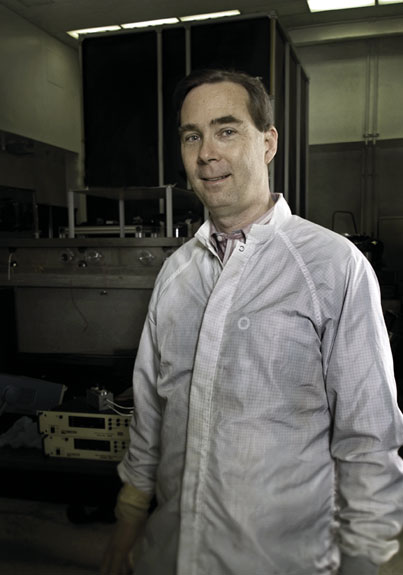


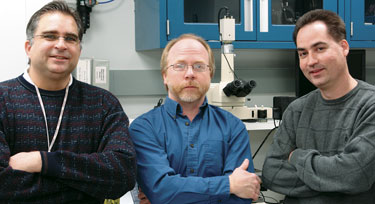


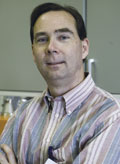
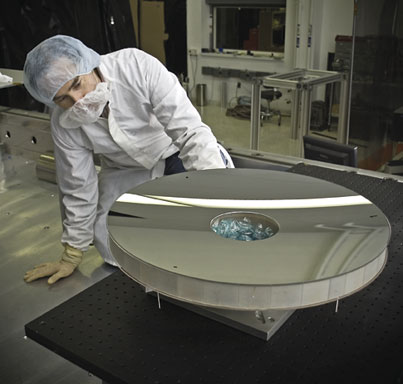


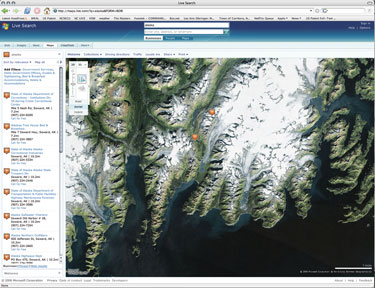 Technology Transfer Benefits
Technology Transfer Benefits

 More than 200 representatives of companies, universities, and government organizations from around the corner and around the world attended the “NASA Goddard Space Flight Center Technology Partnering Opportunities” showcase to find out how Goddard’s latest innovations could help advance their own research and development, public services, or commercial product lines.
More than 200 representatives of companies, universities, and government organizations from around the corner and around the world attended the “NASA Goddard Space Flight Center Technology Partnering Opportunities” showcase to find out how Goddard’s latest innovations could help advance their own research and development, public services, or commercial product lines.